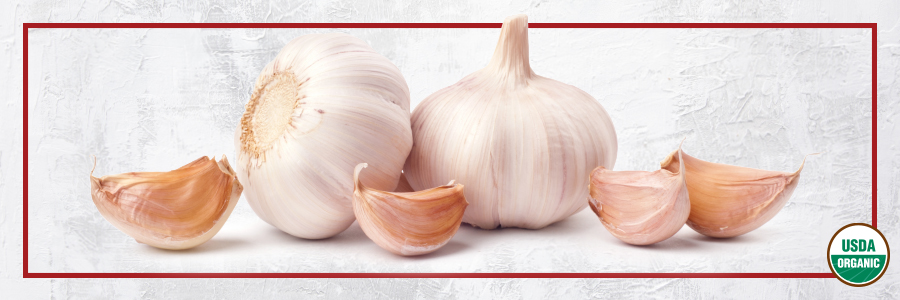


Sign-up for {N}power to get exclusive discounts, newsletters, members-only features, and more!
 Denver - Design District - Alameda and Broadway
Denver - Design District - Alameda and Broadway
368 S Broadway
Denver, CO 80209
United States
 Preferred Store:
Select a Store
Preferred Store:
Select a Store

Cloaked in a papery wrapping, garlic is a humble, edible bulb from the lily family that packs a punch. Small and mighty, garlic has been beloved around the world for thousands of years. In addition to its well-documented health benefits, garlic has also been used as a protectant beyond its delicious nutritional value. Folklore around the world is riddled with ways to use garlic, from warding off vampires in Bram Stoker’s Dracula to protecting King Tut and other Pharaohs in the afterlife in ancient Egypt.1 These days, we may not need to keep the vampires away, but it’s always a good idea to keep garlic at hand to ward off sickness and add healthful flavor to food.

Pungent and protective, the very compounds that give us garlic breath are the ones that support our immune system. Garlic contains organosulfur compounds that put up a stink against bacteria and viruses. Studies show organosulfur compounds like allicin, potent in garlic, have strong antibacterial and antimicrobial effects.2 3 These nutrients also support antioxidant action, fight harmful bacteria like H. pylori in the gut, boost immune cell function, help fight inflammation, and can even be used topically as an acne treatment.4 5 6 7 And to remedy that garlic breath, try some lemon water! The acidity can help flush away the stink.
From ancient India, to Rome, through the Renaissance and beyond, garlic is one of the earliest known plants to be used medicinally, and it has stood the test of time.8 In ancient Rome, people believed eating garlic could “clean the arteries,” and though that’s not exactly how it works, they were onto something about garlic’s benefit to cardiovascular health—one of garlic’s major superpowers. Studies have shown that garlic supports healthy blood pressure and cholesterol levels, decreases platelet aggregation, and protects endothelial cells from oxidative damage.9 10 11 So go ahead and get your garlic breath on!
Garlic is not immune from synthetic sprays in conventional farming. Pesticides used on garlic include glyphosate, neonicotinoids, and organophosphates. These sprays endanger the people who grow our food, the environment, and us. One study found that the organophosphates used in conventional garlic farming were dangerous to the farmers’ health, including causing DNA damage.12 Neonicotinoids are notoriously harmful to bees and can wipe out entire colonies. Interestingly, garlic is registered by the EPA as a natural pesticide, as it makes an effective spray to fend off certain critters and insects. And while synthetic sprays harm the bees that make our planet thrive, garlic extract can help bees keep illnesses at bay and boost their longevity.13 Here’s to organic garlic and longevity for us all!



Sign-up for {N}power to get exclusive discounts, newsletters, members-only features, and more!

